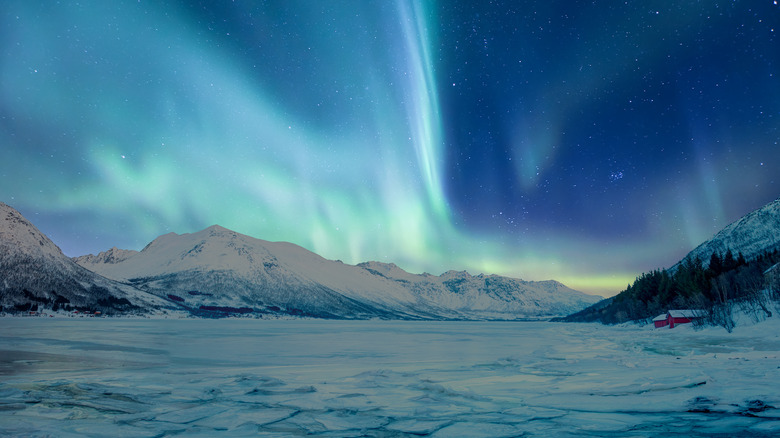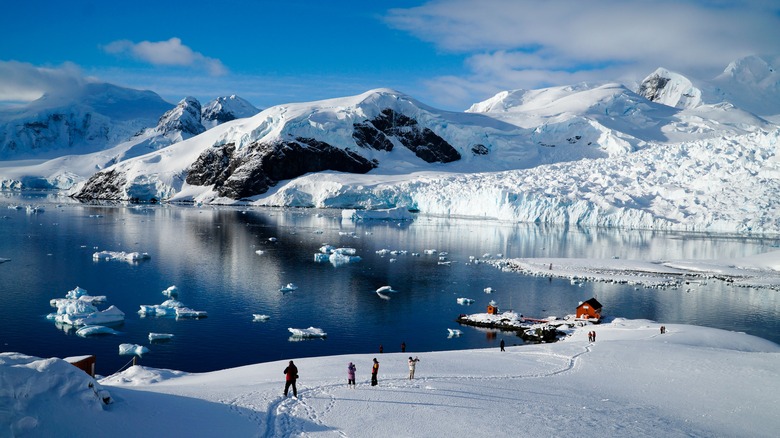The Real Reason The North And South Pole Have No Time Zones
When you think of the North Pole and the South Pole, your first thought is probably Christmas, followed by polar bears. However, there's a far more interesting thing about both places, and that's that neither has a set time zone. According to BBC Science Focus, both the North Pole and the South Pole converge at the lines that determine the time zone a place is in. Basically, they are in every time zone at once.
Because there is no set time zone, scientists and visitors who visit the above areas have the novelty of picking a time zone to stick to. There are 24 time zones in total, but due to their unique positions, the poles found in both the north and south do not adhere to one in particular. Time zones are how we define our lives and our routines, whether that's knowing when to wake up or knowing when to be where you are supposed to be. As you can imagine, going to a place with no such schedule can cause some trippy situations for those who endeavor to visit.
A lack of time zones creates a wholly unique place
Another interesting thing relating to the time zones of the North Pole and South Pole is that, due to their positioning, the poles also don't have regular day and night like most time zones. Instead, both of the poles are subject to drawn-out stretches of both daylight and what can seem like never-ending night (via Australia Antarctic Program). Per the National Oceanic and Atmospheric Administration, there's no sunlight at all from October to March at the North Pole. From March onwards, the sun rises progressively, reaching its peak in mid-June.
Writing for Scientific American, Katie Weeman discussed how confusing a lack of time zones can be. Weeman shared that her role was to "support communication" for the ship "Polarstern" from a remote, time-zoned position — i.e. Colorado. There were 100 people from 20 different countries on the ship, and yet not one of them was in the same time zone, rather co-existing in a completely liminal space.
No population has been established in either of the poles
Nevertheless, the lack of a time zone and the general disorienting feeling it would give us is much less of a big deal due to the fact no one lives at the North Pole full-time (per National Geographic). Beyond the aforementioned peculiarities in the poles, at the North Pole, the ice shifts regularly, making the land inhospitable for the native Inuits who live in neighboring Arctic areas of Russia, Canada, and Greenland.
When it comes to the South Pole, the answer is a little trickier. While the Antarctic surface area has no permanent residents, it does attract plenty of visitors, particularly during the summer months. Moreover, as reported by Aurora Expeditions, there are 66 research stations in Antarctica. The researchers living in these stations will pick a time zone to adhere to, both to communicate with those not at the pole and to make their time spent in the South Pole appear more "normal" than it might otherwise.


